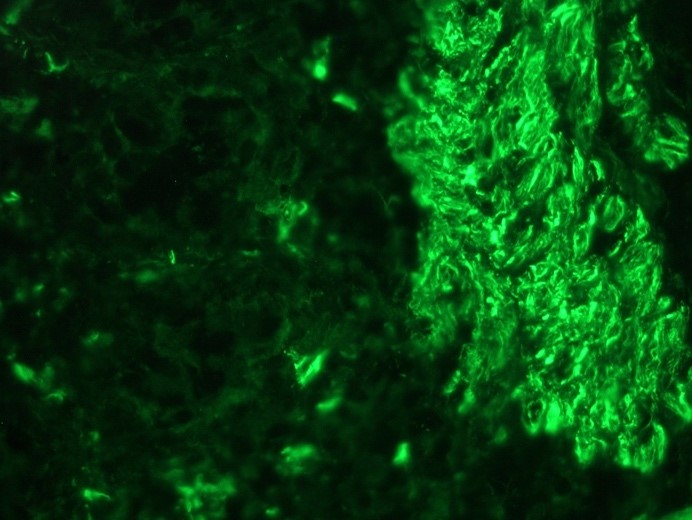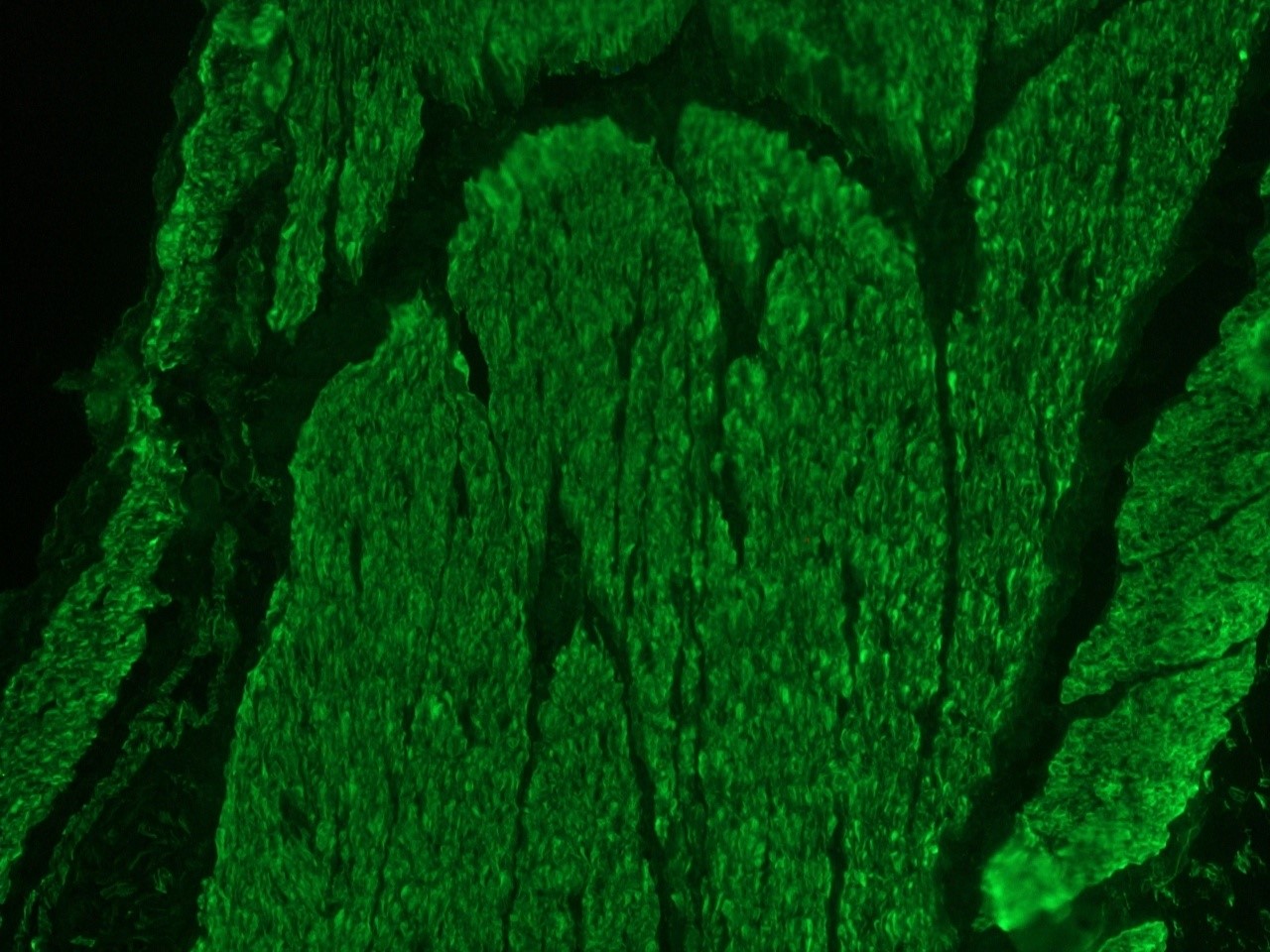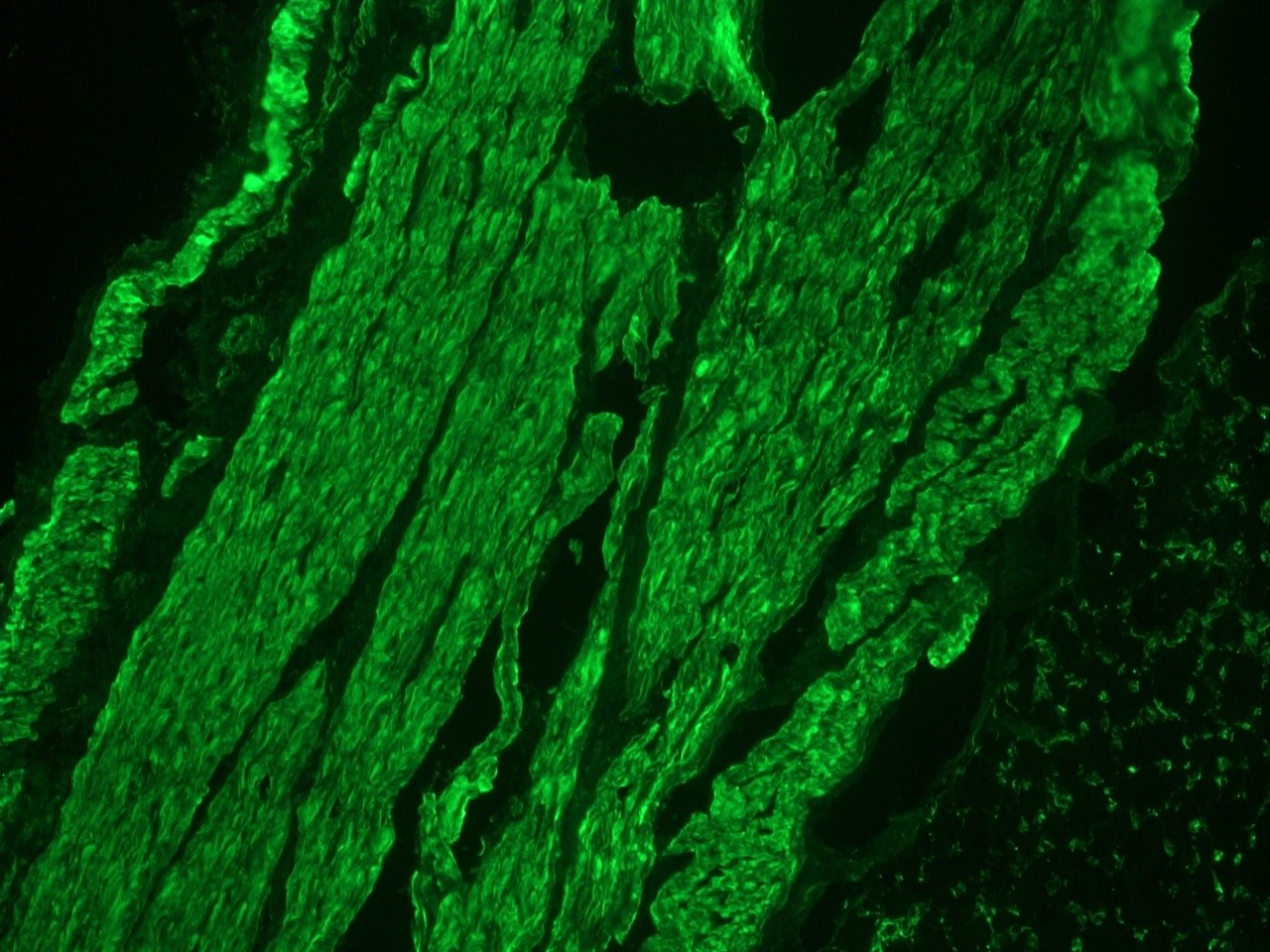Catalogue

Rabbit anti Desmin K5
Catalog number: MUB0402S| Clone | Polyclonal |
| Product Type |
Primary Antibodies |
| Units | 0.25 ml |
| Host | Rabbit |
| Species Reactivity |
Bovine Caprine Chicken Hamster Human Mouse Rat Zebrafish |
| Application |
Immunohistochemistry (frozen) Immunohistochemistry (paraffin) Western Blotting |
Background
Desmin is a 53 kDa intermediate filament protein and exhibits a high degree of tissue specificity, its expression being predominantly confined to all types of muscle cells (cardiac, skeletal and smooth muscle). Regulation of desmin expression is stage and tissue-specific, since it is induced during terminal development and muscle cell differentiation. In skeletal en cardiac muscle cells desmin is localized in the Z-disk region and at the intercalated disk. The expression pattern of desmin in smooth muscle is much more heterogenous. Coexpression of desmin and vimentin has been observed in tumors derived from muscle tissue, i.e. rhabdomyosarcomas and leiomyosarcomas. Furthermore, during myocard dysfunction dramatic changes in the distribution of desmin have been observed.
Source
K5 is a Rabbit Serum directed anti Chicken gizzard muscle desmin. Desmin was purified from a crude tissue preparation by prepaRative gel electrophoresis as described in reference 1.
Product
Each vial contains 250 ul Rabbit polyclonal antiserum containing 0.09% sodium azide.
Formulation: Each vial contains 250 ul Rabbit polyclonal antiserum containing 0.09% sodium azide.
Specificity
K5 reacts exclusively with desmin, which is expressed in smooth and striated muscle cells and their tumors.
Applications
K5 is suitable for immunoblotting and immunohistochemistry on frozen and paraffin-embedded tissues. Optimal antibody dilution should be determined by titration; recommended range is 1:25 – 1:100 for immunohistochemistry with avidin-biotinylated Horseradish peroxidase complex (ABC) as detection reagent, and 1:100 – 1:500 for immunoblotting applications.
Storage
The antibody is shipped at ambient temperature and may be stored at +4°C. For prolonged storage prepare appropriate aliquots and store at or below -20°C. Prior to use, an aliquot is thawed slowly in the dark at ambient temperature, spun down again and used to prepare working dilutions by adding sterile phosphate buffered saline (PBS, pH 7.2). Repeated thawing and freezing should be avoided. Working dilutions should be stored at +4°C, not refrozen, and preferably used the same day. If a slight precipitation occurs upon storage, this should be removed by centrifugation. It will not affect the performance or the concentration of the product.
Caution
This product is intended FOR RESEARCH USE ONLY, and FOR TESTS IN VITRO, not for use in diagnostic or therapeutic procedures involving humans or animals. It may contain hazardous ingredients. Please refer to the Safety Data Sheets (SDS) for additional information and proper handling procedures. Dispose product remainders according to local regulations.This datasheet is as accurate as reasonably achievable, but Nordic-MUbio accepts no liability for any inaccuracies or omissions in this information.
References
1. Ramaekers FC, Puts JJ, Moesker O, Kant A, Huysmans A, Haag D, Jap PH, Herman CJ, Vooijs GP (1983). Antibodies to intermediate filament proteins in the immunohistochemical identifiCation of Human tumours: an overview. Histochem J, 15, 691-713
2. Quax W, Van den Broek L, Egberts WV, Ramaekers F, Bloemendal H (1985). Characterization of the Hamster desmin gene: expression and formation of desmin filaments in nonmuscle cells after gene transfer. Cell, 43, 327-38.
3. Pieper FR, Slobbe RL, Ramaekers FC, Cuypers HT, Bloemendal H (1987). Upstream regions of the Hamster desmin and vimentin genes regulate expression during in vitro myogenesis. EMBO J, 6, 3611-8.
4. Krimpenfort PJ, Schaart G, Pieper FR, Ramaekers FC, Cuypers HT, Van den Heuvel RM, Vree Egberts WT, van Eys GJ, Berns A, Bloemendal H (1988). Tissue-specific expression of a vimentin-desmin hybrid gene in transgenic mice. EMBO J, 7, 941-7.
5. van den Heuvel RM, van Eys GJ, Ramaekers FC, Quax WJ, Vree Egberts WT, Schaart G, Cuypers HT, Bloemendal H (1988). Intermediate filament formation after transfection with modified Hamster vimentin and desmin genes. J Cell Sci, 88, 475-82.
6. Pieper FR, Schaart G, Krimpenfort PJ, Henderik JB, Moshage HJ, van de Kemp A, Ramaekers FC, Berns A, Bloemendal H (1989). Transgenic expression of the muscle-specific intermediate filament protein desmin in nonmuscle cells. J Cell Biol, 108, 1009-24.
7. Schaart G, Viebahn C, Langmann W, Ramaekers F (1989). Desmin and titin expression in early postimplantation Mouse embryos. Development, 107, 585-96.
8. Raats JM, Pieper FR, Vree Egberts WT, Verrijp KN, Ramaekers FC, Bloemendal H (1990). Assembly of amino-terminally deleted desmin in vimentin–free cells. J Cell Biol, 111, 1971-85.
9. Council, L., Hameed, O. (2009). Differential expression of immunohistochemical markers in bladder smooth muscle and myofibroblasts, and the potential utility of desmin, smoothelin, and vimentin in staging of bladder carcinoma Modern Pathology 22, 639-50.
Protein Reference(s)
Database Name: UniProt
Accession Number: P17661
Safety Datasheet(s) for this product:
| NM_Sodium Azide |

Figure 1. Muscle cell immunostaining in frozen section of swine colon for desmin using MUB0402S (K5; diluted 1:100).

Figure 2. Muscle cell immunostaining in frozen section of chicken gizzard for desmin using MUB0402S (K5; diluted 1:200)

Figure 3. Muscle cell immunostaining in frozen section of chicken gizzard for desmin using MUB0402S (K5; diluted 1:200).



